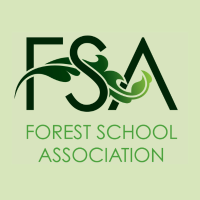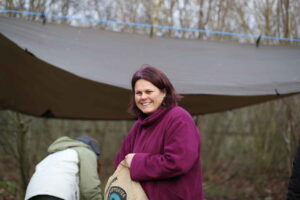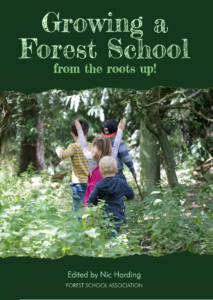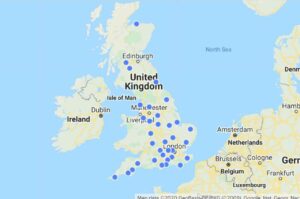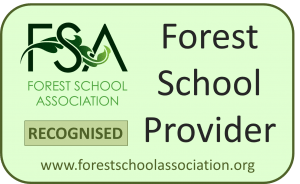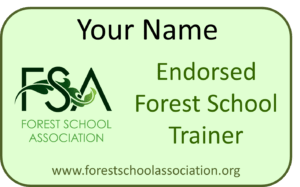Guest Blog by Sarah Lawfull (wherethefruitis.co.uk), FSA Endorsed Trainer, FSA Director
Earth Day – #ShowTheLove
April 22nd would have seen people gathering at events around the globe to celebrate ‘International Earth Day’. Instead, we are invited to join Earth Day Live 2020.
Earth Day, is proclaimed by the United Nations General Assembly as a day to acknowledge that humankind needs to live in ‘Harmony with Nature’ to future-proof the planet, slow down the rate of climate change and reverse the loss of biodiversity, achieving ‘a just balance among the economic, social and environmental needs of present and future generations’(UN Harmony with Nature Programme). In this difficult and unsettling time, we have been forced to face a future that may be irrevocably changed by a virus. We are dealing with the current challenges of Covid19 and wondering how we will come together to rebuild and restore our communities in the aftermath.
On its 50th anniversary, Earth Day 2020 focuses on Climate Change. Perhaps our quiet skies, empty roads and enforced simpler lifestyles will be bringing relief to those areas of our world most polluted by light, noise, rubbish and fumes.
Around the world, people are still facing the very real traumas of poverty. These are exacerbated by the Covid-19 pandemic: poor or non-existent health care, lack of sanitation, lack of shelter and food. All these impact climate change. Inequalities of access to land, fuel, education, housing and legal representation are all factors in the complicated, planet-damaging human ecology we are creating.
“What am I doing to make the Earth happy?” Professor Steve Van Matre’s question at the Forest School Association’s national conference got me thinking about sustainability in new ways. Are there more things I could be doing to live out what I am teaching at Forest School and in our training? Am I truly modelling and developing ‘long-term, environmentally sustainable attitudes and practices in staff, learners and the wider community’?
There are many young people whose knowledge of climate issues far exceeds my own. The courage of young activists to challenge the ‘business as usual’ attitudes of governments and multinational corporations has reignited my passion and given me hope for this amazing Earth we call home. Even in this hugely disruptive period of history, and perhaps due to this virus, we have discovered that ‘business as usual’ does not have to happen – that there are different ways to live.
I was further encouraged to read on the UN website that the Harmony with Nature Programme has been ‘driven by many interns, volunteers and young professionals, who represent a generation which firmly believes that our present lifestyle must be changed – that it is time to respect the ecological limits of the Earth, our common home, and to promote the well-being of Nature.’
In the environmental education world, we often talk about reconnecting children with nature, perhaps forgetting that we ourselves are part of nature, albeit a growingly dysfunctional part. Small children, given the opportunity, demonstrate this so brilliantly. Somehow, in the name of progress, adults have engineered an indoor, virtual world. Our reliance on nature for our life: food, fuel, shelter, medicine, entertainment, seems to have escaped us.
The UN website puts this in context:
‘The solar system reminds us that, just as the Earth is not at the centre of the Universe, neither are we humans the centre of the Earth. We, along with the rest of the natural world, are all interconnected within the larger web of life.’
Many of us committed long ago to removing all single-use plastic from our shopping, food and otherwise. We buy fair-trade hot chocolate and coffee. We often buy locally baked bread, even make our own, choose seasonal fruit and vegetables, our meals may be vegetarian or vegan. We are reducing packaging and ensuring that, wherever possible, we purchase needed resources from charity shops, to reuse and repurpose items.
My current favourite repurposed item is an antique Ice Pick we use to make holes in syrup tins for charcoal and char cloth-making; the children love its story and inevitably talk turns to Disney’s epic, ‘Frozen’. Discussion about life before electricity and freezers for ice cream usually follows.
Teenagers and adults, in turn, become fascinated by the history of coppicing, charcoal making, the life of the top-dog and underdog, and discovering sustainable woodland management practices. In addition, an understanding develops of the environmental impact of vastly increasing the burning of fuel alongside the release of carbon in the Industrial Revolution, realizing that this was all done in the name of scientific and economic progress.
I know of Forest School leaders cycling to their sites with trailers full of reclaimed tools, others finding ways to engage their wider communities in supplying good quality second-hand waterproofs and wellies. These would otherwise have found their way to landfill if not given a new home. This is not about using other people’s rubbish, or old equipment that is not good enough for the task. The people we work with need to know that their comfort and learning matter If they are given leaking wellies and waterproofs to wear, they will not stay dry or feel cared for.
Consuming less, modelling a simpler ‘Earth Kind’ way of being may go some way to improving life in our own neck of the woods. Clearly, we need to do so more than this if we are to address the climate emergency with our groups. We have learned that sustainability is about so much more than recycling: the truths about our recycled rubbish ending up floating in seas on the other side of the world have taught us this. Helping others understand that global warming and the extinction of species is symptomatic of first-world humans living as consumers is key. Unlocking an understanding of the consequences of one group of people using up all the resources, or of exercising its power over others, is vital.
In ‘Change Your Questions, Change Your Life’ Marilee Adams writes, “Blame keeps us stuck in the past. Responsibility paves the way for a better future.” So much of the dialogue around sustainability focuses on blame, making it easier for us to avoid taking any responsibility, ‘What is the point of me recycling when other countries are belching out smoke and filling the oceans with plastic waste?’ we might ask. Others of us wallow in despair and close our ears, finding the conversation too difficult.
Removing judgment and blame from our rhetoric may be a challenge. Being passionate about reducing our impact on the earth’s resources, we sometimes slip into a place of self-righteousness, alienating those we seek to influence. At its core, Forest School is about learning to care for myself, care for other people and care for the planet. Modelling kindness, alongside a willingness to learn and change, we have a message of hope that we should be shouting from the treetops.
Hugely simplified, the argument could be framed as economic progress versus the science of climate change. Amanda Power’s article, ‘To prepare climate strikers for the future, we need to rewrite the history books’ (February 25, 2020 The Conversation) notes that ‘the greatest biodiversity today is found in areas managed by indigenous peoples’. This recognizes ‘the continuing costs and consequences of empire’. She suggests a new approach to history which will ensure students are ‘more resistant to arguments that prioritise economic growth over sustainability and social justice and will have a clearer sense of how old power structures perpetuate modern problems.’
Forest School offers an empowering way for our groups to learn about the stories and practices of indigenous cultures, and to take responsibility for their own place on the planet. Sharing stories, linking our practical skills to people around the world, asking questions about water, food production, and building with our groups will give them opportunities to think critically and begin to find solutions. They learn that resources are finite at Forest School, that there is only enough hot chocolate for one cup each, for example. Carrying two containers of water into the woods for our mud play and mark making might lead naturally into conversations about girls and women in third world countries walking miles each day to fetch water for their families.
I am hugely aware that at times I have chosen services and goods without much thought to the ecological impact. If the cost of a resource matters more to me than consideration of how and where it has been made, more than the lives of the people making and supplying it, am I living out the ethos and principles of Forest School? Power’s suggestion that prioritising low cost over sustainability and social justice serves to perpetuate social inequalities is borne out by the work of the United Nations. A different way of living is clearly set out in the UN Sustainable Development Goals (UNSDGs).
These 17 goals may provide a useful framework for our thinking as we co-create our own Forest School culture with our groups and collectively as a professional association. Perhaps choosing the goal that resonates most with us is a useful starting point, whilst recognising that they are all interconnected, just as all living things are inextricably linked. The most pertinent to us as Forest School leaders may be Goal 15: Life on Land, focusing on minimising ecological impact and promoting biodiversity.
Leaving man-made fibres in the woods for animals and birds to ingest in the form of air-drying clay or ropes and wool, using up all the deadwood in our sites for fires are ways in which our actions become disconnected from our Forest School principles. Taking measures to avoid eroding stream banks or damaging the trees we climb, helps us to see the woodland as a special place we visit – not an adventure playground, placed there for the purpose of our entertainment.
Learning to live in harmony with nature is a great gift of quality Forest School to our communities. Conserving and creating habitats and learning about managing our sites to make life better for protected species fascinates children and adults. Carefully choosing and planting trees in the right place and caring for them long term is a powerful way for all of us to learn about locking carbon into the soil even before the trees have grown big enough to effectively do the same. I, and other members of the FSA, are delighted to be supporting Forest School colleagues whose vision for The Children’s Forest is gaining momentum.
We will be together again, hopefully in an Oxfordshire woodland, October 2021, for the national Forest School Association conference. In the meantime, join us for one of our Wednesday webinars, find ways to connect and share what you are learning.
If you want to change the climate of education and the direction of climate change, consider ways of intentionally bringing the UNSDGs into your own practice and social media posts.
How will you be sharing and celebrating International Earth Day 2020 with your family? What message will you be sharing with your Forest School groups on social media? We would love to hear.
Together we will create our ‘Climate of Hope: Sustainable Forest School’.
#ShowTheLove
Useful links
